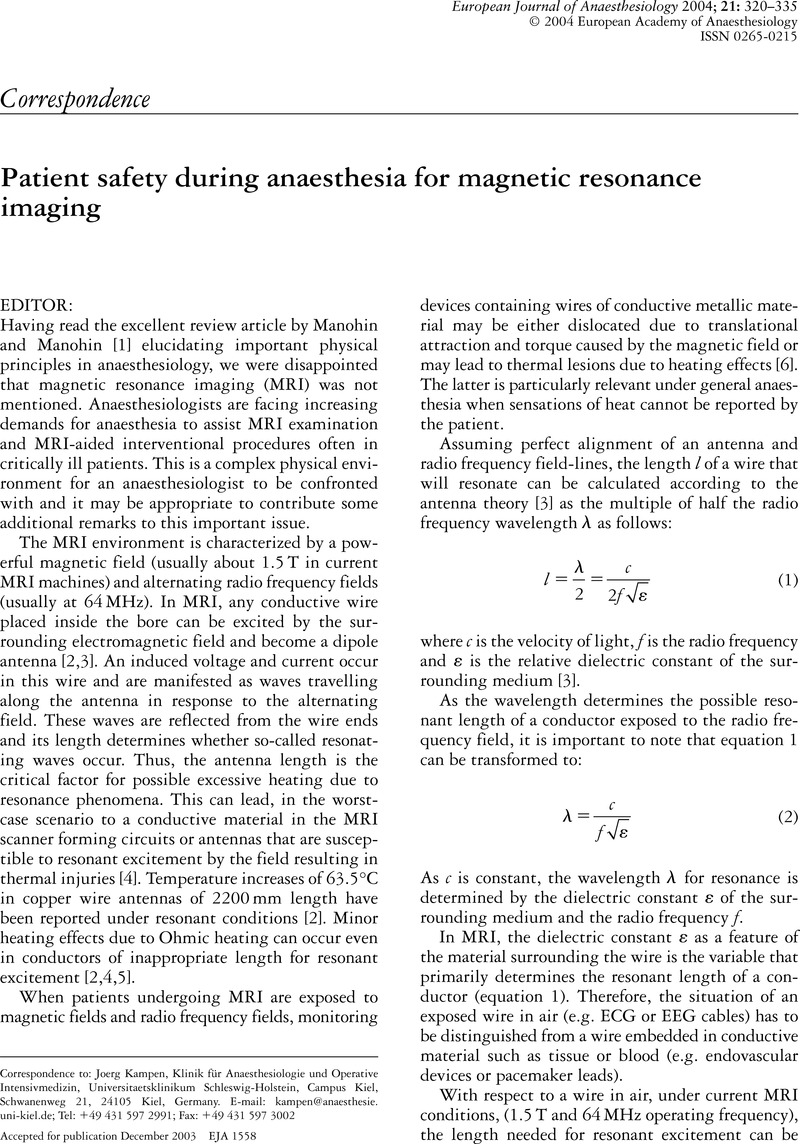No CrossRef data available.
Article contents
A reply
Published online by Cambridge University Press: 23 December 2004
Abstract
An abstract is not available for this content so a preview has been provided. Please use the Get access link above for information on how to access this content.

Information
- Type
- Correspondence
- Information
- Copyright
- 2004 European Society of Anaesthesiology
References
Cammu G, De Keersmaecker K, Casselman F, et al. Implications of the use of neuromuscular transmission monitoring on immediate postoperative extubation in off-pump coronary artery bypass surgery. Eur J Anaesthesiol 2003; 20: 884–890.Google Scholar
Osmer C, Vogele C, Zickmann B, Hempelmann G. Comparative use of muscle relaxants and their reversal in three European countries: a survey in France, Germany and Great Britain. Eur J Anaesthesiol 1996; 13: 389–399.Google Scholar
Eriksson LI. Evidence-based practice and neuromuscular monitoring: it's time for routine quantitative assessment. Anesthesiology 2003; 98: 1037–1039.Google Scholar
Castellano JM, Durbin JrCG. Epidural analgesia and cardiac surgery: worth the risk? Chest 2000; 117: 305–307.Google Scholar
Ho AM, Chung DC, Joynt GM. Neuraxial blockade and hematoma in cardiac surgery: estimating the risk of a rare adverse event that has not (yet) occurred. Chest 2000; 117: 551–555.Google Scholar

